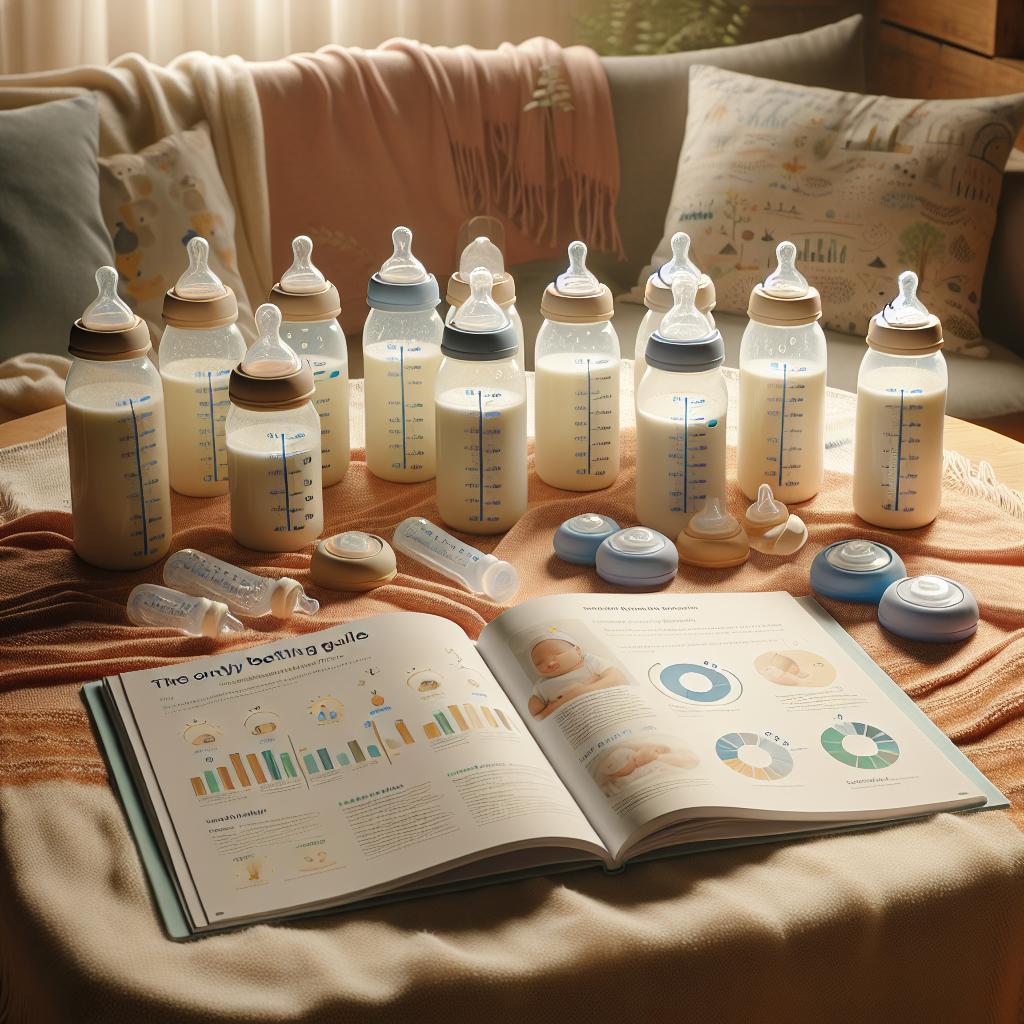Understanding Biomimetic Feeding for Babies
The initial years of a child’s life play a significant role in determining their growth and well-being. And, a crucial part of a baby’s early development is nutrition. As much as we agree that breastfeeding is one of the best feeding practices for a newborn, it’s not always feasible for every mother. Hence, the next best alternative comes in the form of biomimetic feeding.
Biomimetic feeding for babies aims to mimic the natural breastfeeding process as closely as possible, enhancing the health and comfort of the baby. This approach considers various aspects, such as the flow of the milk, the feel of the nipple, and the grip of the bottle.
The Benefits of Biomimetic Feeding
Biomimetic feeding ensures a healthier feeding option for babies, which caters to a host of benefits:
– Seamless Transition: This technique can be extremely beneficial in smoothening the transition from breast to bottle. To understand more about facilitating this change, check out our detailed post here.
– Better Digestion: As the feeding process closely imitates natural breastfeeding, it can enhance the baby’s digestion and reduce issues related to overfeeding or underfeeding.
– Oral Health: According to Dr. Shreya Pavan, a renowned Pediatric dentist, biomimetic feeding can be healthier for a baby’s oral development.
Biomimetic Feeding: How Does it Work?
Biomimetic feeding utilizes bottles designed to mimic the natural breastfeeding experience. They ensure a steady flow of milk, similar to how nursing mothers would offer. The designed nipples replicate the mother’s nipple’s texture and shape, providing familiarity to the baby.
To make the most out of biomimetic feeding, it’s essential to choose the right bottle. Don’t miss out on our comprehensive guide on selecting the perfect bottle here.
Enhancing the Biomimetic Feeding Experience
Biomimetic feeding can also be fortified with nutrients. A recent study highlighted the importance of well-designed food supplements adding to growth and development in children.
Additionally, introducing a variety of tastes and textures can be a good start to food diversification and sensory education for babies. In fact, an experimental study promotes the benefits of eliciting different responses in children through various food designs.
Infusing love and care into feeding practices can enhance the experience of feeding for both moms and babies. For a deep dive into practical tips on bottle feeding, peruse our curated list of must-have bottle feeding tips here.
Fostering Healthy Habits
Biomimetic feeding not only ensures an optimal feeding experience but also fosters healthy nutrition habits early in life. It’s about offering the healthiest feeding option for the baby, presenting a win-win situation for both mom and baby.
Incorporating biomimetic feeding in your baby’s routine can be the first step towards a promising and healthy infant growth journey.
Demystifying the Science Behind Biomimetic Feeding
“Biomimetic” implies imitating nature, the essence of which biomimetic feeding strives to capture. The science behind this method is based on the understanding that an infant’s mouth and jaw structures are best suited for a natural breastfeeding process.
This intricate design concept involves examining and understanding the mechanics of natural breastfeeding. The flow, speed, and pressure of the milk, along with the baby’s suckling action, form the foundation of biomimetic feeding bottles. For an in-depth overview of the science behind biomimetic feeding, refer to this research article.
Biomimetic Feeding in Practice
Incorporating biomimetic feeding in your baby’s routine is simple. Purchase biomimetic feeding bottles from a trusted manufacturer. Monitor your baby’s responses, and adjust as necessary. This could mean changing the bottle’s nipple to better resemble the mother’s or adjusting the bottle’s flow rate to match the baby’s eating habits.
The biomimetic feeding experience will vary for each baby, and that’s okay. It’s about finding what works best for your baby’s unique needs, ensuring that they feel loved and cared for during their feeding sessions.
Addressing Common Concerns Around Biomimetic Feeding
Adding biomimetic feeding to your baby’s routine may seem daunting, but addressing common concerns can help:
– Is it complicated to use?
No, biomimetic feeding bottles are as simple to use as regular feeding bottles.
– Is biomimetic feeding cost-effective?
While biomimetic feeding products may initially seem more expensive, they often provide value for money due to their advanced design and health benefits.
– Are there any side effects?
Biomimetic feeding is a safe process with no documented side effects. In fact, it can lead to better digestion and oral health in babies.
The Future of Biomimetic Feeding
Biomimetic feeding continues to evolve, with constant research and advancements in technology enhancing its effectiveness. Experts are diligently exploring new methods that further improve bottle designs to imitate natural breastfeeding.
For instance, there are ongoing projects exploring materials that could perfectly mimic the feel of a natural breast. Some intriguing innovations include biomimetic architecture and materials, hinting at exciting possibilities for biomimetic feeding tools.
Nutrition and Biomimetic Feeding
The goal of biomimetic feeding goes beyond simply replicating the breastfeeding process. It allows parents to provide added nutrients that complement or enhance the baby’s diet.
Research shows that additional nutrients like omega-3s, iron, and vitamin D are crucial for a child’s development in the early years. For more on this, you can read this published article.
Moreover, baby formula infused with additional nutritional elements can be a game-changer, and biomimetic feeding bottles make their introduction to your baby’s diet seamless.
In many ways, biomimetic feeding is indeed nature’s way adapted to suit modern life. And mother or not, every caregiver can offer the feeding experience that every baby deserves.







